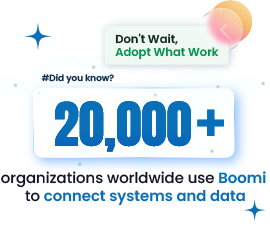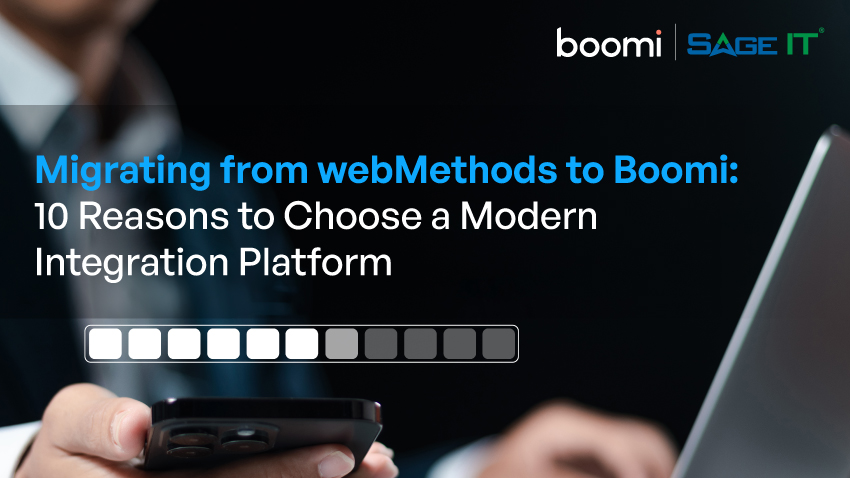“Data inconsistencies and silos disrupt workflows and create misaligned decisions across teams. Inaccurate master data means teams operate on conflicting information, leading to delays, missed opportunities, and inefficient operations. Master data forms the backbone of critical business processes, supporting everything from sales and finance to customer service. Yet, without an infrastructure that guarantees its consistency across systems, businesses fall into operational inefficiencies.
This is where Boomi Master Data Management (MDM) comes into play. By applying governance rules to your data, Boomi MDM centralizes and standardizes the flow of critical business information. Backing this up is the Master Data Hub (MDH)—the platform that synchronizes master data across departments and systems in real-time.
This hub architecture prevents discrepancies, ensuring every team works with accurate, up-to-date information. Operational efficiency improves as systems communicate seamlessly without manual intervention, solving the common IT problem of fragmented and inconsistent data.
In this article, you will explore how Boomi MDM’s governance, real-time synchronization, and scalability drive operational improvements and address common IT challenges, enabling more streamlined workflows across the organization.
What Is Boomi Master Data Management? Core Features and Benefits
Boomi Master Data Management provides centralized governance of your data by creating a single source of truth for all critical business information. It automates data validation, unifies siloed data, and ensures real-time updates across multiple systems. This enables all departments to access accurate, consistent data, reducing errors, operational disruptions, and manual intervention, while improving overall data reliability.
Boomi MDM operates through the Master Data Hub (MDH), which acts as a central control point for managing, synchronizing, and governing data across systems. The Hub’s architecture ensures data integrity and adherence to governance policies across platforms, enabling organizations to enforce consistent data management rules. The Hub guarantees data flows seamlessly between applications, reducing inconsistencies and supporting compliance requirements
Core Features
1. Data Governance
Boomi MDM sets up an advanced data governance framework that defines and enforces data rules across all connected systems. These rules automatically validate, clean, and ensure the accuracy of data at every touchpoint. IT teams can configure governance policies directly in the platform, applying them uniformly across all systems. This minimizes risks, supports compliance, and guarantees data remains accurate and aligned with organizational standards.
2. Real-Time Synchronization
Boomi MDM’s real-time synchronization ensures that any changes to data are reflected immediately across all systems, avoiding data discrepancies and ensuring departments operate with the most updated information. This is crucial for businesses running hybrid cloud and on-premise environments, as it ensures consistent data availability without delays, improving operational flow and decision-making accuracy.
3. Excellent Integration
Boomi MDM offers perfect integration with major platforms such as Salesforce, Azure, and SAP, among others. Its extensive library of pre-built connectors allows for efficient integration without custom coding. IT professionals can configure workflows that manage data transfer across systems, ensuring that all data stays consistent, reducing integration complexities, and minimizing the manual effort required to maintain systems.
4. Scalability
Boomi MDM and the Master Data Hub offer a highly scalable infrastructure, designed to manage increasing volumes of data as your organization grows. Whether handling thousands or millions of records, the platform maintains performance and governance without requiring manual adjustments. IT teams can easily scale their data management operations by connecting new systems and data sources without downtime or performance issues, ensuring long-term flexibility.
How the Boomi Master Data Hub Works: Hub-Spoke Architecture
Boomi’s Hub-Spoke architecture serves as the backbone for master data management. The Hub acts as the central point where all master data is stored, cleaned, and maintained, while the Spokes represent the connected systems (e.g., CRM, ERP, financial systems). This structure keeps every department working with accurate, real-time data, reducing errors and inconsistencies across operations.
MDM and MDH Working Together:
Master Data Management (MDM) creates the policies and rules for how data should be maintained across an organization. The Master Data Hub (MDH) applies these rules in real time, confirming that every connected system follows the same data governance policies. This ensures data consistency, even when it flows between different applications and departments.
Lifecycle of the Master Data Hub:
The Master Data Hub lifecycle follows four key phases:
Steps to Implement Boomi MDM in Your Organization
Step 1: Define Master Data Sources
Identifying critical master data (e.g., customer, product, employee data) is the first step. This involves setting up governance rules to keep data clean, validated, and aligned with business needs.
Defining data owners and creating validation protocols ensures that data entry errors are caught early. For example, establishing rules to keep customer data consistent across all departments avoids the common issue of data duplication, leading to better reporting and decision-making.
Step 2: Deploy Boomi MDM and Synchronize
After identifying your master data sources, the next step is deploying Boomi MDM. The Master Data Hub acts as the core, connecting systems like CRM, ERP, and financial platforms. Once integrated, data flows across these systems seamlessly.
Syncing customer and product data in real-time across platforms allows all teams to work with the same updated information, eliminating manual updates and errors. This ensures a single source of truth for key business operations.
Step 3: Data Stewardship and Ongoing Governance
Data stewardship plays a critical role in ensuring ongoing data quality. Appointing data stewards helps monitor data health, flag inconsistencies, and enforce rules set during implementation.
Boomi MDM enables automatic data validation and real-time alerts when issues arise. Stewards can review and resolve these issues, preventing inaccurate data from spreading. Regular audits and governance meetings help ensure that data stays compliant and aligned with the organization’s evolving needs.
Checklist for Implementing Boomi MDM
Why Boomi MDM Is a Smart Investment for Your Enterprise (Tailored Content)
Improved Operational Efficiency Data silos and manual workflows are the root of inefficiency for many organizations. Boomi MDM automates real-time synchronization between your CRM, ERP, and financial systems, eliminating the need for manual data entry.
This integration reduces data redundancy and human error—the primary culprits behind bottlenecks in decision-making.
Faster Time-to-Market You can’t afford delays when responding to business changes. Whether your organization is onboarding a new SaaS platform or integrating a legacy system, Boomi MDM supports seamless integration without the need for extensive custom development.
This agility enables your IT team to connect new systems quickly and without disrupting ongoing operations. Reduced integration time means your organization can react faster to market opportunities, keeping you competitive in a landscape where time-to-market often defines success.
Cost Reduction and Compliance For organizations dealing with strict regulatory environments, compliance is non-negotiable. Boomi MDM provides built-in governance frameworks that ensure your data aligns with industry standards—whether it’s GDPR, HIPAA, or SOX.
By automating compliance checks and data validation, Boomi MDM reduces the risk of fines and penalties. Additionally, by streamlining your data governance processes, you’ll save on the labor costs typically spent on data audits and compliance management.
Conclusion
With Boomi Master Data Management, you’ll finally get control over your critical business data. No more dealing with inconsistent information or manual data entry errors. Boomi ensures real-time synchronization across all your systems, enabling teams to operate on the same page. Whether it’s governance, ideal integration, or scaling your operations, Boomi MDM has the solutions you need to eliminate data silos and improve decision-making.
Ready to take control of your data and drive real business growth? Contact our Boomi consulting team to see how Boomi MDM can help you achieve unified, accurate data for your business.
















